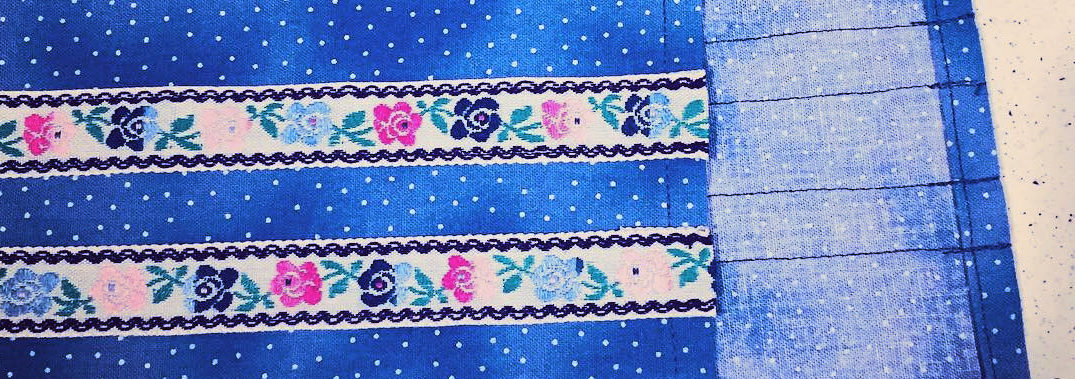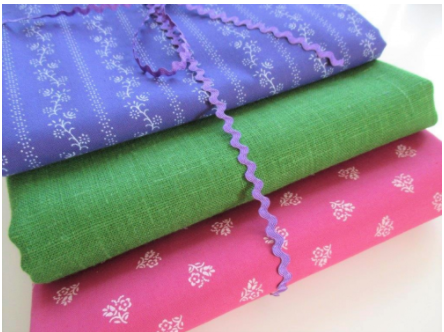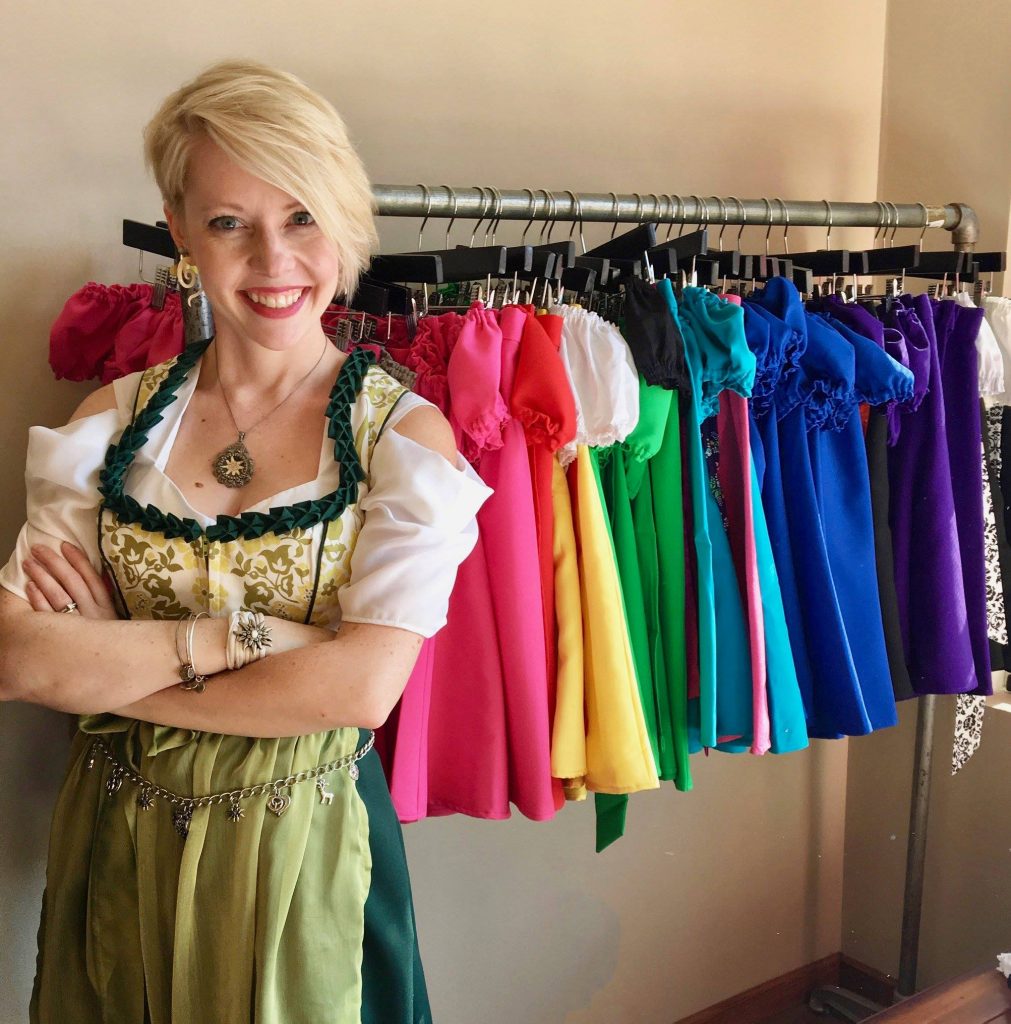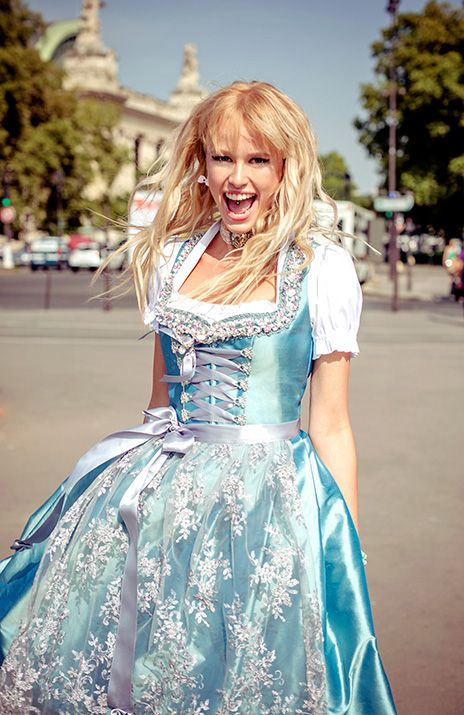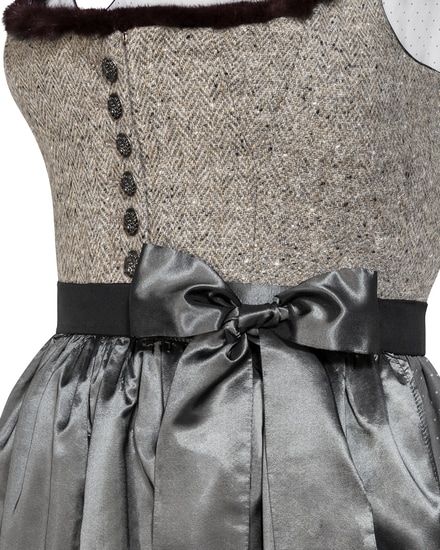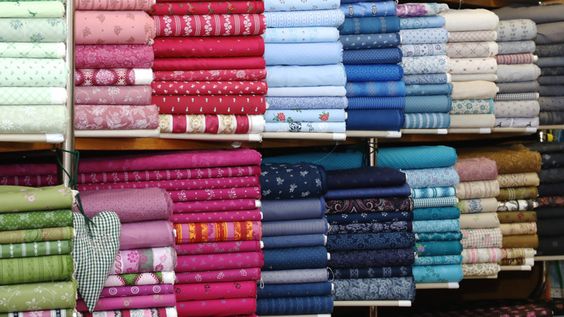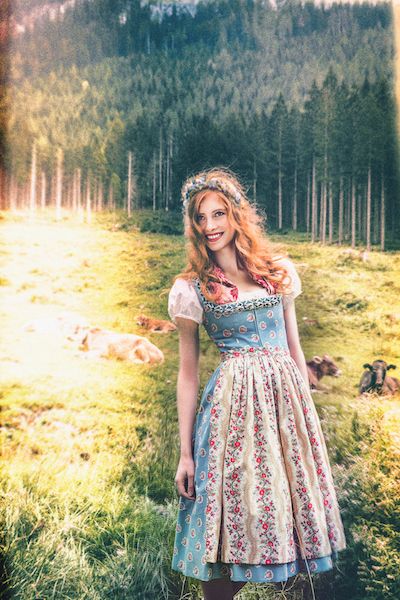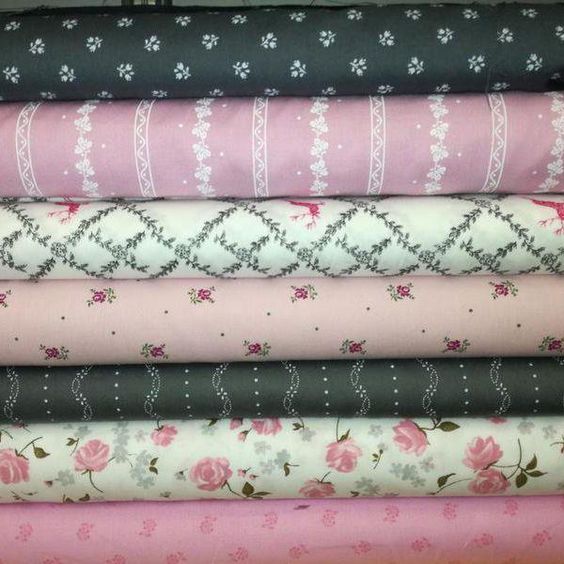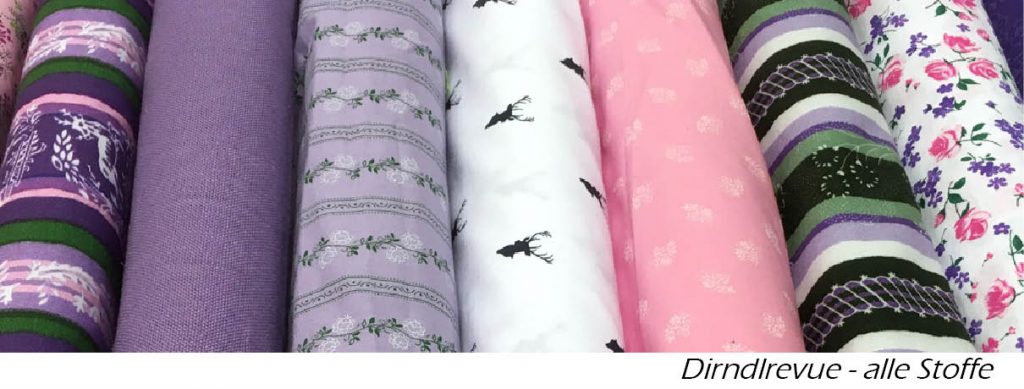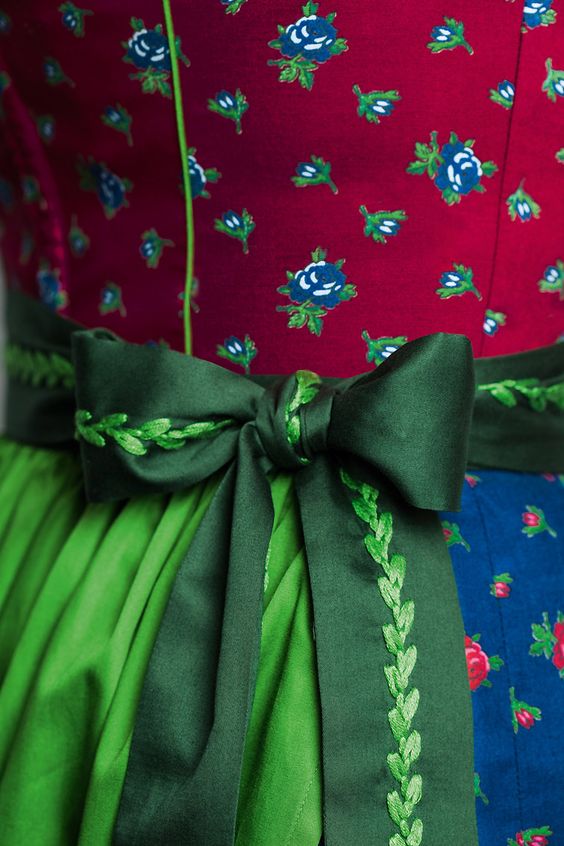This post was first published on the Historical Sewing blog in September 2018.
Hello Fabrics!!! In continuing my current obsession of dirndls, I wanted to cover fabrics one can use to make these wonderful ensembles for daily wear or special occasions.
Before jumping into your fabric stash be sure to review my post on general elements of dirndl and Trachten wear, then also my post on dirndl patterns to use. I’ll give you recommendations for yardage needed below, but following a pattern will give you the more specific yardage you need without too much overage or coming up short.
Please note that this post is based on my own personal research regarding fashionable dirndls and making them at home.
Now, if you were to purchase a ready-made dirndl today either in Germany or Austria or even from an online vendor outside the Bavaria area like Rare Dirndl in Chicago or Ernst Licht in Oley, Pennsylvania you will see a variety of textiles used.
Basic printed cotton broadcloth is the most common material often with a solid linen bodice. Cotton twill and shirting or Oxford fabrics can also be used if they appeal to you.
Wools come into play for cooler weather. Wool suitings, tweeds, tartans (yes!), broadcloths, Merino, serge, gabardine, and flannels all can be delightfully used for dirndl bodices and skirts for winter months. Tropical weight wools can make an everyday durable dirndl for year round.
Silks are reserved for dressier occasions. This includes structured materials like taffeta, satin, brocades, dupioni and shantung, corded silks, and organza (for aprons). Drape-y silk like crepe and charmeuse can work okay, but you may want more width in the skirt for a full look. I don’t really recommend soft-hand silks in a structured garment like a dirndl.
In addition, modern synthetic textiles like polyester, poly/cotton blends and even nylon (in laces and such) are widely used. If you purchase or make your own dirndl ensemble, synthetics can be less expensive than cotton and linen. For comfort and everyday wear I suggest natural fibers (cotton, linen, wool and silk).
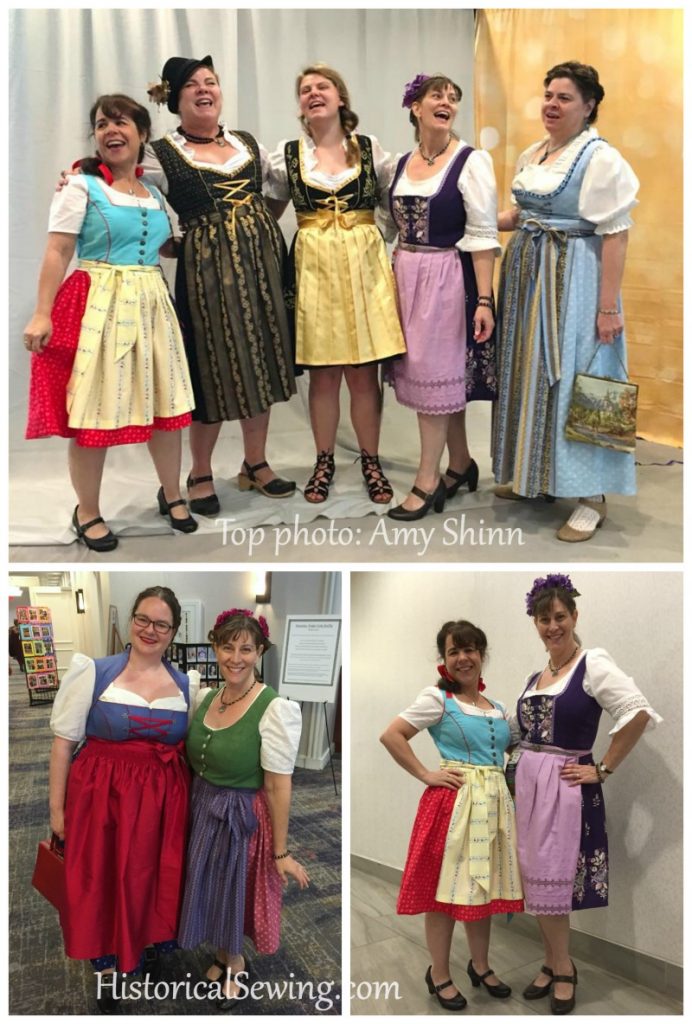
For review, here are the elements of a dirndl ensemble:
- Dirndl dress which consists of
- Bodice
- Skirt
- Apron
- Blouse
It’s important to keep in mind that the fabrics used in dirndl ensembles all work together. Although patterns and prints are mixed like crazy, colors and textures are well-considered in fabric selections.
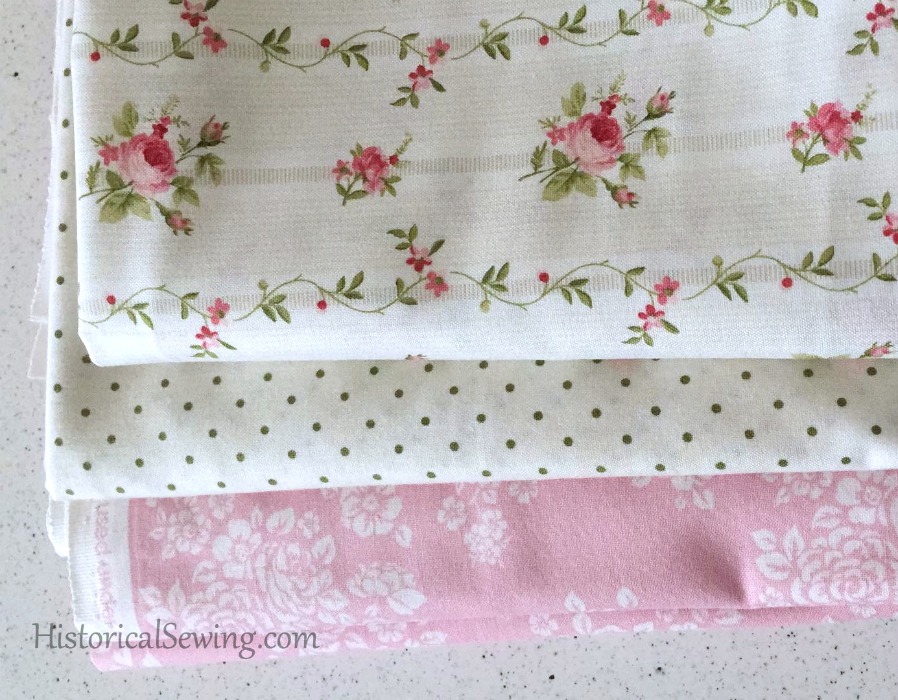
Basic fabrics to use for dirndls:
- Cottons like quilting, batiste, sateen, shirtings/Oxford, lawn (for skirts), twill for bodices
- Linens in mid to heavy weight
- Silks like taffeta, shantung, dupioni, organza – something with hand and good drape, not too slinky
- Wools in high quality weaves and blends; twill, tweed, flannel
Because of the structure and support of the fitted bodice, heavier fabrics (e.g. linen and twill) are employed here more often to accompany a lighter weight skirt in silk or cotton print. (Light skirts increase the polka dance factor.) Although, you’ll find loads of dirndls made entirely from cottons or linen.
Just as with other fashion, the types of fabric correspond with the event, time of day, and purpose of the wearing of dirndl.
Silks and brocades are for weddings and formal evening events. Cottons and linens are for more every day and casual meetings. Wool is generally more functional but can be embroidered or brocaded to “up” the fanciness.
In addition, think outside the box like using a sari for the apron; use a strong cotton for underlining a bodice cut from a sari.
Colors for dirndls
The sky really is the limit here… however, you may want to take note of some general guidelines of colors used in Bavaria and Austria.
Villages deep in the mountains and valleys have specific colors to indicate their community and set it apart from others. Dirndls, being a modern fashion that grew out of Trachten (folk wear) starting in the 1870s, can follow these colors or not.
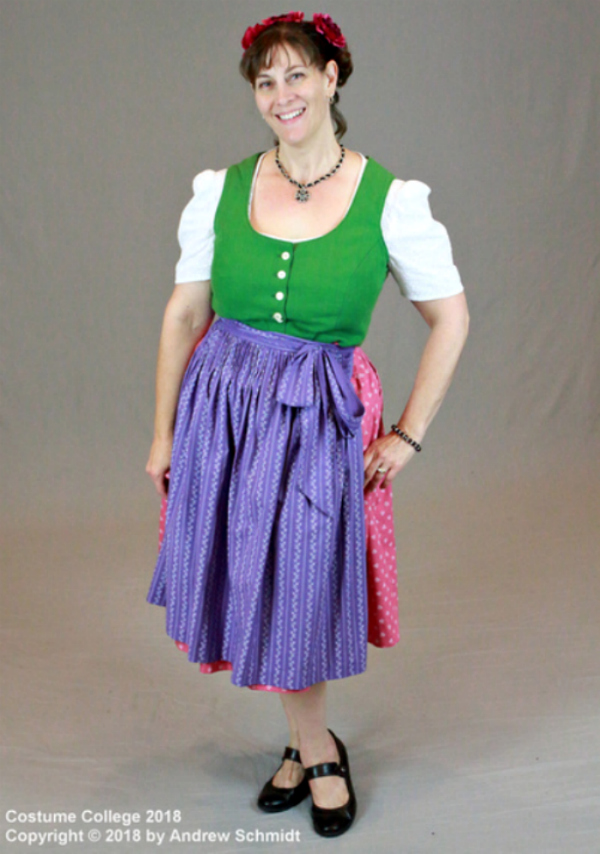
For example, my dirndl with green bodice, pink skirt and purple apron are colors of Austrian (Ausseer) dirndls. Originally, I ordered the packet of fabrics from Laura und Ben because I thought they looked pretty. 🙂 Only later was I told by a follower that they were the colors of an Ausseer dirndl. Neat!
I don’t have specific knowledge for other villages and regions, but if you want a definite color scheme I encourage you to do further research.
Popular colors for fashionable dirndls:
- Pinks of all sorts
- Greens, especially lime/spring colors and loden/forest shades
- Blues, from navy to light
- Grays from dark to light and many times with a color print
- Reds
- Purples, especially in a medium shade and mauves
- Black
Frequently seen combos of fashionable dirndls include: pink and green, black and red (colors of German flag, for inspiration, or for gastronomy dirndls), red and white (Austrian flag for inspiration), red and green, shades of blue together, shades of pink together, orange and green, and tan or gray with blues.
White prints are seen often on colored cottons. Light colors will have dark prints. Bavarians love their dirndl colors and mix one to three main colors in their cotton prints. Be brave to mix and match what you love!
Another color theme is white and is reserved for bridal wear. From what I can tell, the bodice is white but the skirt can be white or other light color. Aprons are white or light colored too.
(If you have further knowledge of specific dirndl colors please comment!)
Dirndl dresses (bodice and skirt) can be made from one single fabric or one for the top and one for the skirt. However, most often they are two fabrics.
Dirndl Apron Fabrics
In searching for your dirndl fabrics, it’s important to shop at the same time for the apron material. This element is what makes a common jumper dress a dirndl!
The good thing about aprons is that they are interchangeable and can even be made reversible to wear with various dirndl dresses.
With a basic dress in neutral colors and fibers, the apron can make your dirndl dress “common,” “elegant,” or with pizazz. From my research, the apron is in a fabric entirely separate from the dress…. Meaning, it’s not the same as the bodice or skirt. The dress bodice and skirt can be made from the same fabric, but the apron is nearly always different.
Many times a color in the skirt or bodice will be pulled out and highlighted in the apron textile. Or vice versa: the apron fabric is selected first (a stripe or print with a few colors), then the dirndl bodice and skirt fabric selected from the colors in the apron.
The apron really brings the ensemble all together. A nice wool or cotton dirndl can have added spice with a silk apron.
If you’re afraid of color in the dirndl dress, make your apron shine for the fun and touch of authenticity it brings. Oftentimes the apron can be in the same family of fabrics – like a printed cotton – as the dirndl skirt.
Patterns, Types and Weaves for Dirndl Fabrics
Not just talking about fabric colors, dirndl ensembles tend to have at least one fabric be in a print or special fabric weave or embellishment. Solid colors can be amazing! They are a fantastic base to start with and trim. Yet the playfulness of the dirndl ensemble lends itself well for special touches.
Trailing/striped or uniform scattered floral patterns seem to be THE cotton print textile of choice. Go to Bavarian shops (in person or online) and the general “Trachtenstoffe” will be a wide selection of cotton prints and a few solids.
Also, things related to the Bavarian region are uber popular. This includes edelweiss and deer motifs along with pretzels, beer steins, wheat, turtledoves, hearts, flowers and garden variations.
Imagine fairytale settings, Snow White, coo-coo clocks, Heidi, and Disney’s Fantasyland. Yodeling optional. 😉
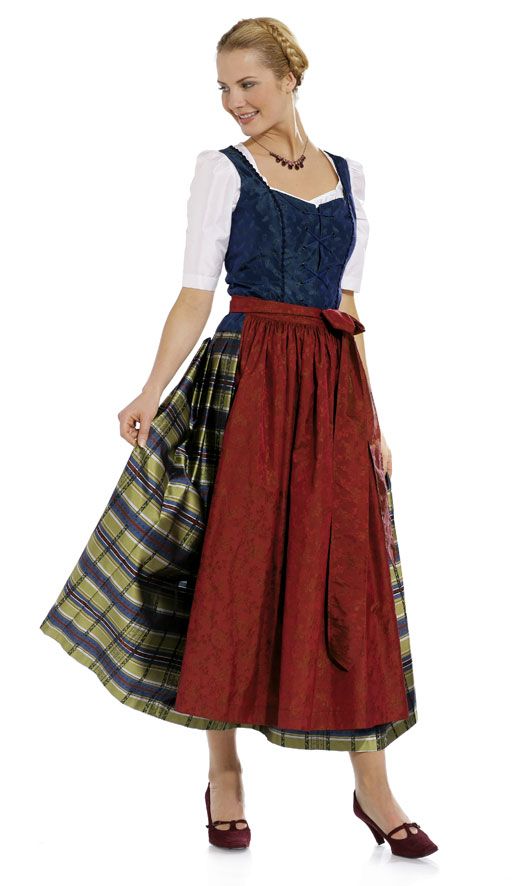
Checks, plaid and gingham are all seen frequently as an textile weave in dirndl ensembles. If you’re having trouble coming up with a third fabric (bodice, skirt and apron), consider a small check or gingham! Stripes are also common.
Embroidery in floral motifs is quite popular on dirndls. Sometimes it’s only on the bodice front, others along the skirt hem or both.
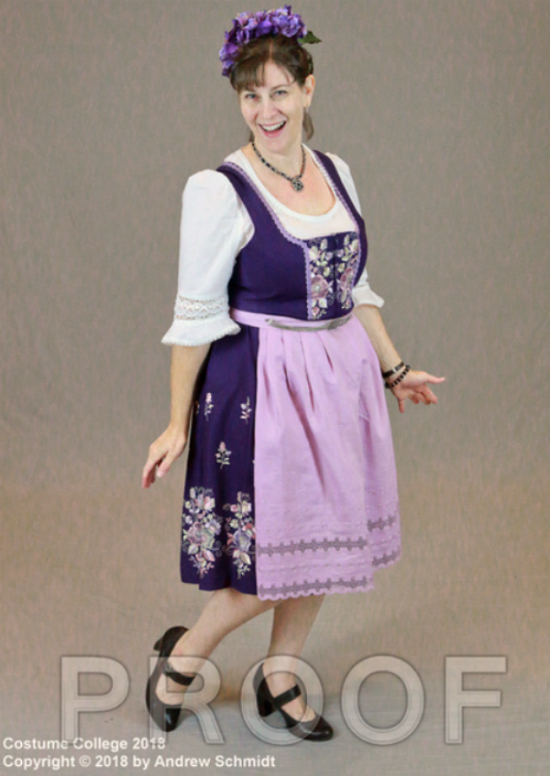
I was gifted a vintage dirndl in embroidered purple linen where the skirt utilized an embroidered border pattern. The apron is an eyelet border cotton – a wonderful choice for aprons.
Silks of taffeta or satin or embroidered make for elegant dirndls for special events. Most of what I’ve seen in silk is solid colors with the apron being the “showpiece.” Silk organza trimmed or embroidered is lovely.
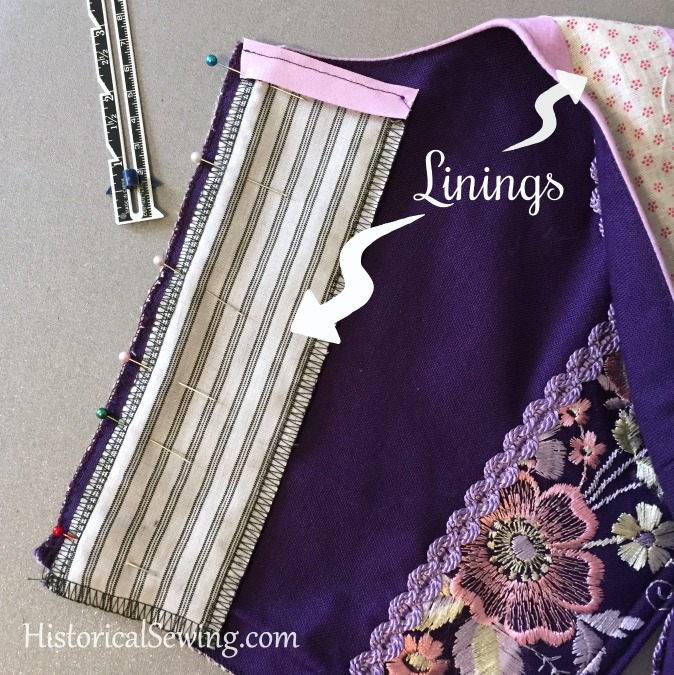
A Note on Dirndl Linings
The skirts are rarely lined. Be sure to wear a slip, petticoat, or petti-pants!
Bodices, however, ARE lined. Generally this is a light to medium weight cotton. Use a light quilting cotton, lawn, shirting, or other light fabric.
I’ve seen solid colored linings, but many are in a woven design or print similar to dirndl print fabrics (remember, Bavarians love color and fun). If you have a scrap left over from another dirndl project then it’s perfect for a lining of a new dirndl.
Where to Find Dirndl Fabrics
This is the challenge for those of us here in the USA and other places outside of Germany and Austria. Of course, you can source authentic fabrics from shops online located in the Bavaria region (or travel there!). But be sure to check their shipping terms as I’ve found some don’t ship outside the EU.
I highly recommend visiting Doro’s blog and her list of “stoff” shops for dirndl fabrics. She has been the leader of the #DirndlChallege in 2018 and given us some great resources.
As mentioned in other posts, I’ve successfully ordered from Laura und Ben in Germany and their fabrics were good quality…. Not to mention highly appropriate too! 😉
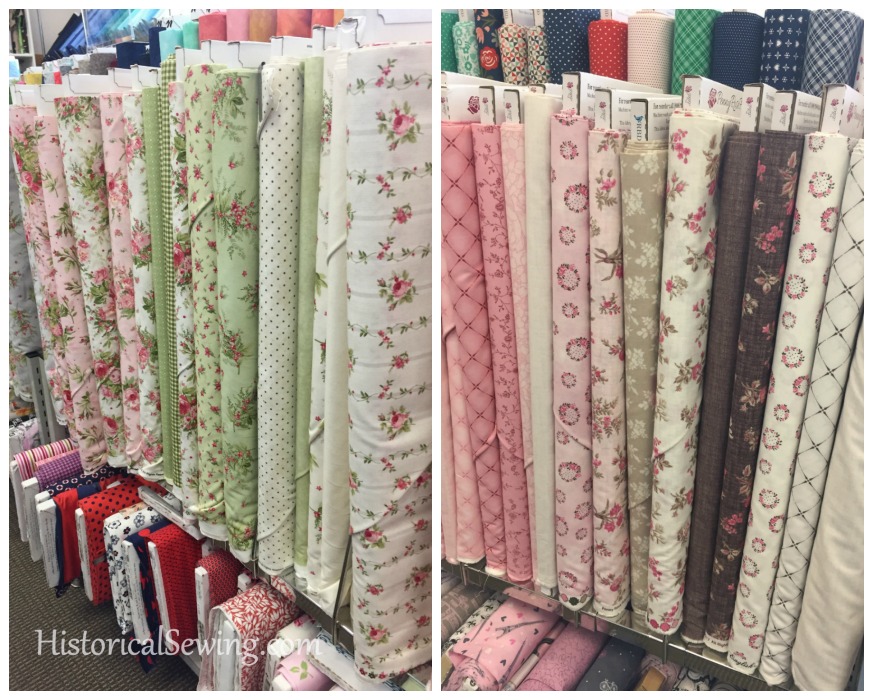
For domestic options – quilt shops! And other stores that offer high-end quilting cotton fabrics.
I do say high-end; although, a friend of mine actually found a cotton with evenly scattered small flowers at Wal-Mart. Yes. So keep your eyes open whenever you go to a fabric store – even JoAnn’s and Hobby Lobby chain stores.
How Much Yardage to Purchase
Surprising to me, I get the question often about how much yardage is needed to make a dirndl. Now, many skirts are cut “on the cross” or along the selvedge edge as the hem length. So, the yardage for this may be longer or shorter than if you were cutting panels running with the grain.
Also, for those of us with larger hips (yours truly), an extra panel or half yard may be just the thing to have the skirt hang nicely from waist to hem.
Those amounts listed below are based on the dirndl packet I ordered from Laura und Ben (seeing as they are in Bavaria, Germany and would know how much one needs to make a dirndl, right?). I did feel I ran a little short of fabric and will add more skirt and apron width to my future dirndl projects. Also, amounts are for a short/just-below-knee length; allow more yardage for a long skirt.
General Yardage Amounts:
For 55” wide fabric (140 cm) (usual width woven and sold for dirndls)
- Bodice: 1 yard or 100 cm
- Skirt: 2 1/4 yards or 220 cm
- Apron: 1 1/4 yard or 110 cm
For 44” wide fabric (110 cm)
- Bodice: 3/4 to 1 yard or 1 meter
- Skirt: 2 3/4 to 3 yards or 2.74 meters
- Apron: 1 5/8 to 1 1/2 yards or 1.37 meters
Stoff Reich has a nice chart, too, for fabric yardage when making a dirndl.
Even as I’ve written this post I’m very excited to get sewing a few more myself. I hope you are inspired to go fabric shopping and make your own dirndl!
I’ll leave you with a Facebook Live video I did in March 2018 on dirndl fabrics and colors and where I showed the new fabrics I received from Germany. Enjoy!
And if you need even MORE inspiration, please visit and follow my Dirndl board on Pinterest and especially my specific section on Dirndl Fabrics. Happy dirndl sewing!!
I would love to hear your suggestions on dirndl fabrics and colors! Please share your thoughts in the comments below. Cheers!

